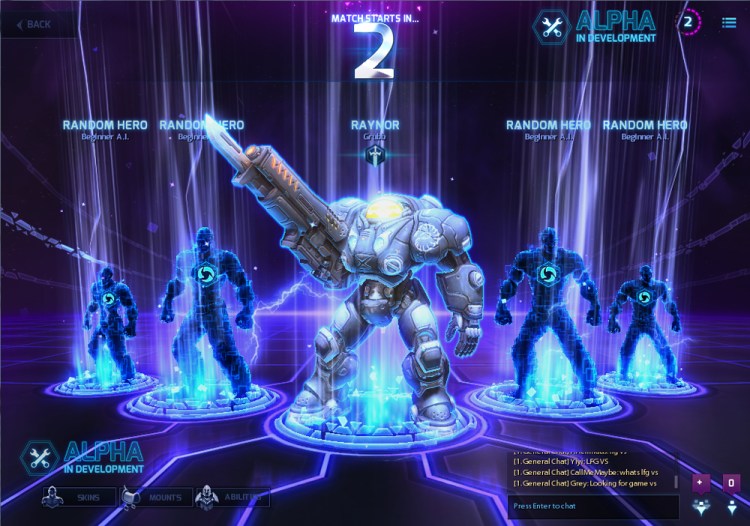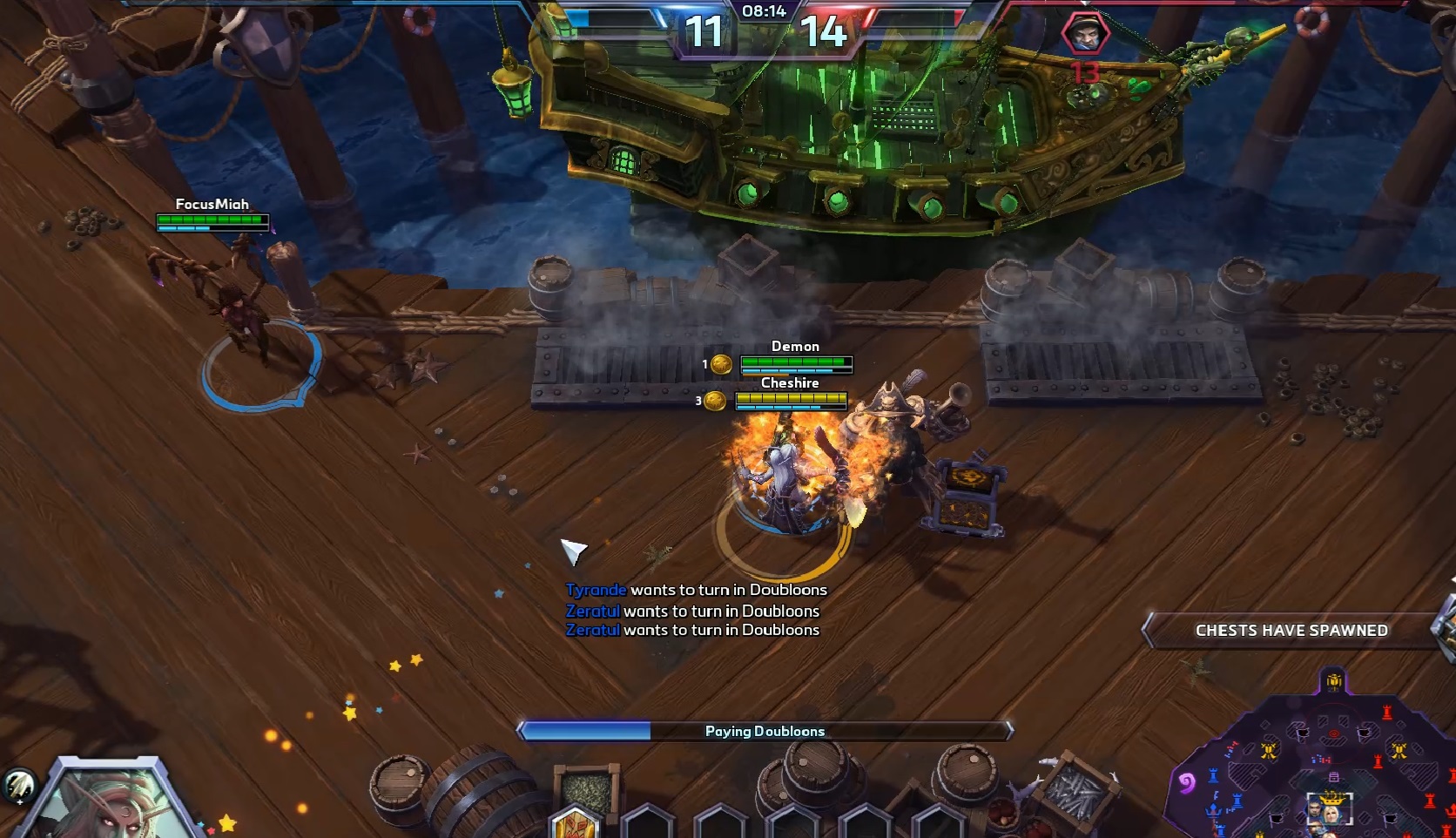One of the most difficult things about multiplayer online battle arenas (MOBAs) is learning the nuances. Learning a new game’s jargon and idiosyncrasies can bog down even the most hardened veterans; if you go into League of Legends from Dota 2 and expect “stack camps” and “pull creeps” for your “ADC“, for example, you’ll be disappointed (and have your streams crossed).
We’re here to help.
Heroes of the Storm might be the simplest and easiest-to-learn MOBA yet, but it’s still defined largely by the different roles each hero plays. Whether you’re looking to deal damage, soak it up, or help the team out while you watch them slaughter the enemy, here’s what you should know about every role in Heroes of the Storm, League of Legends, and Dota 2.
Carries: The stars of the show
League of Legends: A carry is a team’s most important asset; they’ll deal the most damage later in the game and will “carry” their squad to victory, but they need to amass the gold and items to get to that point. LoL divides its carries into two categories: Marksmen, who build up their regular attack damage and speed with items; and Mages, who deal most of their damage through spells and items that amplify those spells.
Early in the game, both need to focus on killing enemy minions that spawn on both sides every few seconds and meet between towers (these are “creeps”) to get gold (this action is “farming”). They should focus on farming enough to the exclusion of almost anything else and let others do the heavy lifting. Later, the match will hinge on them, and they can’t afford to fall behind the enemy carries.
Dota 2: Just about every hero benefits from getting lots of gold — even tried-and-true supports like Jakiro can turn themselves into something formidable in the late game if they farm. Still, some heroes carry better than others and should get as much of the gold as possible, so you’ll see most games fall into the same rhythms they do in LoL.
Heroes of the Storm: Carries don’t have to worry about their lower health pool early or falling behind in gold. Instead, every hero who can deal damage is a threat, and this means a match centers on fighting as a team more than LoL or Dota 2. HotS classifies heroes who focus on damaging enemies as Assassins.
Supports: The stage crew
League of Legends: In LoL, supports play babysitter; they take care of their Marksmen and make sure they don’t get into trouble while they’re still too weak to take care of themselves. They also do all of the shopping for map-revealing wards and relinquish gold so the Marksmen can buy all the cool items. They’re crucial in the early stages but tend to take a backseat later on.
Dota 2: Supports play a similar role here as they do in LoL, except they’re poorer by comparison and have a more extensive grocery list: wards, smoke to help ambush enemies, and dust to reveal invisible heroes. They are also responsible for “stacking” neutral creeps around the map for the carries, which means they’ll get more gold from them later on.
Heroes of the Storm: Supports don’t have it as rough in HotS as they do in other MOBAs. Because they don’t have buy items, heroes in any role can focus more on their spells and gaining levels, which should suit most support players just fine. Support heroes in HotS use their abilities to help their team with healing and temporary stat bonuses.
Middle lane: The playmakers
League of Legends: The middle-laner in LoL is a fusion of the support and carry roles: They rely mostly on spells to deal damage but need to farm gold to stay relevant throughout the match. They’re like Mages and Marksmen but need to be active in securing kills in the early game to turn a bout to their favor. Almost any champion that wants to get gold, but can stand being in a lane without a support, qualifies for the middle lane.
Dota 2: The lane roles in Dota 2 are less rigid than in LoL, which leads to a wider range of heroes that can go mid; some want to farm, others want to get early kills, and a few want nothing but to deny the enemy mid as much gold and experience as possible by harassing them with attacks and spells until they need to leave the lane. In professional play, you’ll also see the occasional support/carry combo in the middle lane.
Heroes of the Storm: The lanes in HotS provide both more and less variety than in other MOBAs: It has more maps, and thus more lane setups (some maps only have two lanes). But every lane, in my brief experience, is not too different from the others on a per-map basis, meaning any hero can enter any lane, reducing the need for dedicated mid-laners.
Initiators: Gotta be startin’ something
League of Legends: In LoL, tanks usually start the fights and keep everyone else alive long enough to finish them. They don’t do it through healing — rather, they control fights by running in, using spells to stun enemies, and letting everyone else whale on the enemy. They tend to have lots of health in order to survive the initial counterattack.
Dota 2: Initiators in Dota 2 aren’t necessarily beefy — they’re just a little better at starting fights in their favor. Most initiators have spells that can disable multiple enemies at a time, with some disables lasting as long as 5 seconds. But if they screw up their opening gambit, they can lose their team the fight.
Heroes of the Storm: Disables in HotS don’t last as long as they do in other games, so it’s up to teams to pick their fights a little better. It does have heroes who can close the gap between them and the enemy without alerting anyone and deal serious damage, but that alone won’t win you a fight. HotS usually classifies heroes with the health and capability to start fights as Warriors.
Junglers: Not all who wander are dead
League of Legends: Junglers don’t go in any of the map’s usual lanes. Instead, they run around the “jungle” parts of the map, taking on the idle neutral creeps that hang out in camps there. In LoL, jungling is fairly standard — along with supports, carries, and mid-laners, most teams have a single jungler, effectively making the areas with wild creeps the fourth “lane.” Junglers can fight the enemies in the middle of the map early on without dying and can assist with early skirmishes in other lanes if they really need to.
Dota 2: Jungling isn’t a set-in-stone role as it is in LoL, but you’ll still see plenty of jungling in professional play since it provides the team with more experience than placing two heroes in a single lane. Additionally, you’ll see some heroes in Dota 2 eschew lanes altogether in favor of looking for enemy heroes to kill from the get-go; this is known as “roaming.”
Heroes of the Storm: HotS doesn’t have dedicated junglers yet (though The Lost Vikings can fight jungle creeps by themselves with the right skill build). Instead, jungling in HotS is a group effort. Because you can recruit the enemies in camps around the map to push lanes for you after killing them, good teams should venture into the jungle, recruit some neutral creep camps whenever they spot a lull in the action, and have a buddy help them.
Pushers: Enemy at the gates
League of Legends: Pushers are the kinds of champions that excel at “pushing” the lanes by clearing them of enemy creeps quickly or dealing damage to towers at a higher rate. In LoL, they tend to fall into the former camp more often. You’ll usually want to push lanes between fights with heroes that kill creeps quickly and can boost attack speed and damage to melt them down.
Dota 2: Pushing is so popular in Dota that players have coined a colloquial phrase for when one hero pushes a lane by themselves while everyone else is either fighting or farming creeps elsewhere: Rat Dota, a term evoking the imagery of a swarm of rats gnawing at your food and fleeing when you try to swat them away. With the number of abilities and items that let people move around the map unhindered, it’s harder to get caught out while pushing this way than it is in other games.
Heroes of the Storm: Matches of HotS are fast enough that you could dub every hero a “pusher.” However, those that it classifies as Specialists can summon units or siege towers quickly in order to gain fast experience and out-level the enemy. Zagara makes great use of this, summoning all sorts of Zerg units to push towers before the enemy can react.
Play your way
Should you decide to dive deep into any of MOBA, you’ll likely find that these roles become a bit more loose as you learn the ins-and-outs of your game of choice. This guide is more as a general primer for someone looking to get into these sometimes-baffling multiplayer games or for longtime League of Legend/Dota 2 veterans looking to get started with Heroes of the Storm.
Find characters you like, get in a comfort zone, and don’t be afraid to experiment. But most important: Destroy that core. Or nexus. Or ancient.
VentureBeat's mission is to be a digital town square for technical decision-makers to gain knowledge about transformative enterprise technology and transact. Learn More




